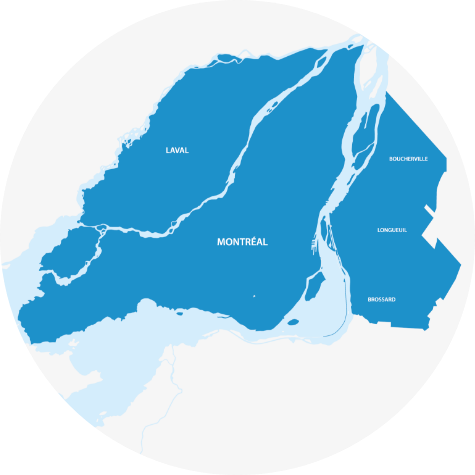What is osteopathy?
Osteopathy is a form of manual approach that aims to improve the functioning of the body and its various systems. The objective of this holistic practice is to restore the body’s balance to optimize its self-regulation capacity. This discipline focuses on the entire body structure and the interaction between the various systems of the body, i.e., the musculoskeletal, neurological, digestive, circulatory or hormonal systems. The osteopath will therefore evaluate the effects of an imbalance of one of these systems on the others to understand the cause and to suggest appropriate treatments. Thus, each osteopathic treatment is personalized according to the needs of the patient.
Clinique GO™’s osteopaths are members of various associations. A project for a professional order for osteopaths in Quebec is currently under study.
What conditions and ailments osteopathy treat?
Clinique GO™’s home osteopathic care can help with the following problems:
Musculoskeletal system: low back pain, sciatic nerve, torticollis, spinal problems, sprains and tendonitis, headaches.
Nervous system: migraines and headaches, dizziness, anxiety and stress, sleep disorders, fatigue.
Digestive system: digestion problems, bloating, diarrhea, heartburn, reflux, constipation.
ENT problems: sinusitis, laryngitis, bronchitis, asthma, otitis, functional dizziness.
Following a trauma: road accident, consequences of a fall.
Pregnancy follow-up: lumbar pain, heartburn.
Although osteopathy is beneficial in relieving many disorders, this type of treatment is not sufficient to cure a patient suffering from a serious disease such as cancer or multiple sclerosis. In this case, osteopathy will act as a complement to traditional medicine to help the patient to bear the treatments or to support him in the different episodes of his disease.
What does osteopathy session entail?
When you meet with an osteopath, he will ask you detailed questions to learn more about your health, medical history, lifestyle, and the problem that brings you to the clinic. All the details gathered will help guide the osteopath in the examination of the body.
The osteopath will then continue the consultation with the physical examination during which he will observe and palpate your body to analyze the movements of your joints, muscles, flexibility, etc. Thanks to these gentle and precise palpation, he will be able to perceive tensions and imbalances caused by certain movements. Given that osteopathy approaches the body, the therapist may intervene in certain areas far from the reason for the consultation.
Your osteopath will ultimately be able to suggest appropriate treatments to improve your condition.
Who can benefit from our in-home osteopathy sessions?
Osteopathy can be beneficial to adults as well as children, babies, and seniors.

